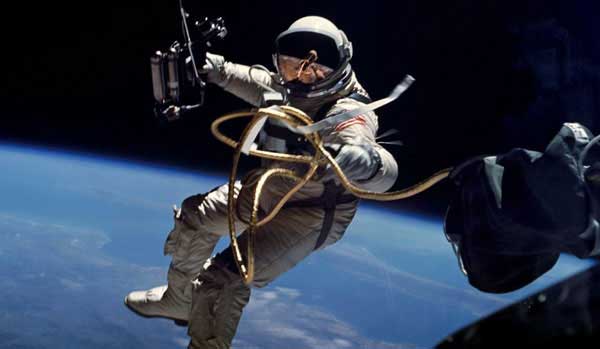
A new study investigated how astronauts'bones compare to those of Earthbound folks over time, and the results are not encouragingfor space travelers.
Scientists have known for years that exposure tomicrogravity rapidlyweakens bones, and the new research shows the effects can last for a yearor more after astronauts return to Earth. The results stress the need to findways to minimize the damage done during spaceflight, researchers said, becausebone recovery on Earth may take a while.
"If we can intervene in space and have crewmembers notlose as much, that would be the best outcome for them," said study leaderShreyasee Amin, an associate professor at the Mayo Clinic in Minnesota.
Measuring bone density
Amin and her colleagues studied 28 American astronauts ? 24men and four women. Their preflight ages ranged from 36 to 53, and theirmissions in space lasted from 95 to 215 days.
The researchers measured the spaceflyers' bone mineraldensity ? an estimator of bone strength ? before launch, immediately afterlanding and again at various times between six and 18 months following theirreturn to Earth.
For a control, the scientists took similar measurements froma sample of 699 people who had never been to space. By comparing the twodatasets, the team was able to determine what the astronauts' bone density likelywould have been, had they never flown in space.
Get the Space.com Newsletter
Breaking space news, the latest updates on rocket launches, skywatching events and more!
The team found that some bones remained weak even a yearafter the astronauts landed, despite intensive exercise and rehabilitationregimes. Hip bone mineral density in particular suffered, Amin said, whileother areas, such as the wrist, bounced back faster.
Bones in the hips and legs need to be strong on Earth,because they lug so much weight around on a daily basis. But microgravity freesthem of this burden and they seem to weaken as a result, researchers said.
"The hypothesis has always been that it's the lack ofload-bearing activity in the lower extremities," Amin told SPACE.com."And that seems to be panning out."
The team also found that women suffer less bone loss thanmen over the long haul. But since there were only four female astronauts in thesample, the team isn't sure what to make of this intriguing result yet; they'restill looking at the data.
"There are a few things we need to dice out before wemake any definitive decision that we should only send women to space,"Amin said with a laugh.
Amin and her colleagues will present their results Tuesday,Nov. 9, at the American College of Rheumatology Annual Scientific Meeting inAtlanta.
Astronauts already training hard
Previous studies have shown that astronauts' bonemineral density drops by up to 1.8 percent every month they spend in space? a rate comparable or to exceeding the decline senior citizens experience duringa full year on Earth.
The physical toll of space missions is no surprise to NASA.The space agency has long known about the problem, and astronauts routinelytrain hard to stave off the worst effects of bone loss and muscle-wastingin space.
During their six-month stints aboard the International SpaceStation, astronauts exercise about 2 1/2 hours per day, six days a week,officials have said. Spaceflyers ride a stationary bike, run on a treadmill andlift weights using a machine ?installed on the station in November 2008 ? thatgenerates loads using vacuum cylinders. [Gallery:Inside the International Space Station.]
And after they return to Earth, NASA puts crewmembersthrough a customized exercise program that can last up to three months.
These exercise regimes may end up making a big difference,helping astronauts' bones stay strong in orbit. But Amin said her team wouldneed more time to flesh out the effects.
"NASA's been really proactive in trying to find someinterventions and improve their exercise capacity, not just for crewmembers'bones but also their muscles and well-being in general," she said."That may be working. But we don't have sufficient data on this newerexercise equipment that has come up on the station."
Risk factors and recommendations
The bone-loss results are just the first stage of theresearchers' study. They're continuing their work, looking at bone density twoto four years after landing. And they're trying to identify risk factors thatlead to bone loss and slow recovery, as well as ways that astronauts' healthcan be improved.
The team is integrating information about the astronauts'exercise regimes and biochemical markers that may influence bone loss and ratesof recovery. They're also thinking about other factors that may contribute tobone weakening, such as vitamin D deficiency, Amin said.
The scientists hope that, over time, they can develop solidrecommendations for how to help keep astronauts' bones healthy in space, andperhaps also how to help them recover once they return to Earth. The new studyis a step along that path.
"It's an interesting first step," Amin said."We're interested in working with NASA further to try to come up with someinformation that may help them and the astronauts long-term."
- Quiz: Reality of Life in Orbit
- Video: How Astronauts Work Out in Space
- Trip to Mars Would Turn Astronauts Into Weaklings
Join our Space Forums to keep talking space on the latest missions, night sky and more! And if you have a news tip, correction or comment, let us know at: community@space.com.

Michael Wall is a Senior Space Writer with Space.com and joined the team in 2010. He primarily covers exoplanets, spaceflight and military space, but has been known to dabble in the space art beat. His book about the search for alien life, "Out There," was published on Nov. 13, 2018. Before becoming a science writer, Michael worked as a herpetologist and wildlife biologist. He has a Ph.D. in evolutionary biology from the University of Sydney, Australia, a bachelor's degree from the University of Arizona, and a graduate certificate in science writing from the University of California, Santa Cruz. To find out what his latest project is, you can follow Michael on Twitter.









